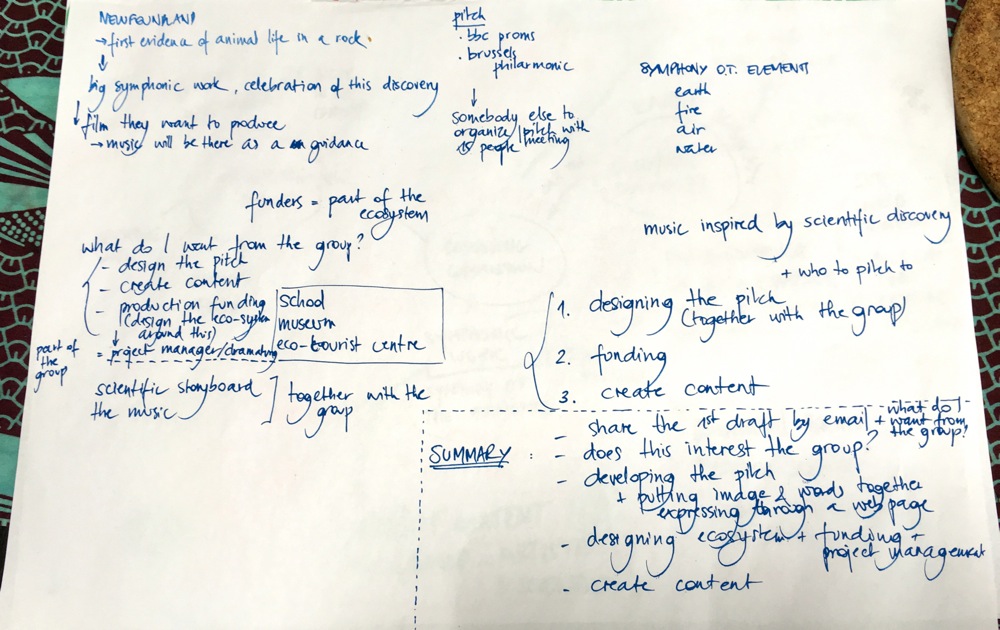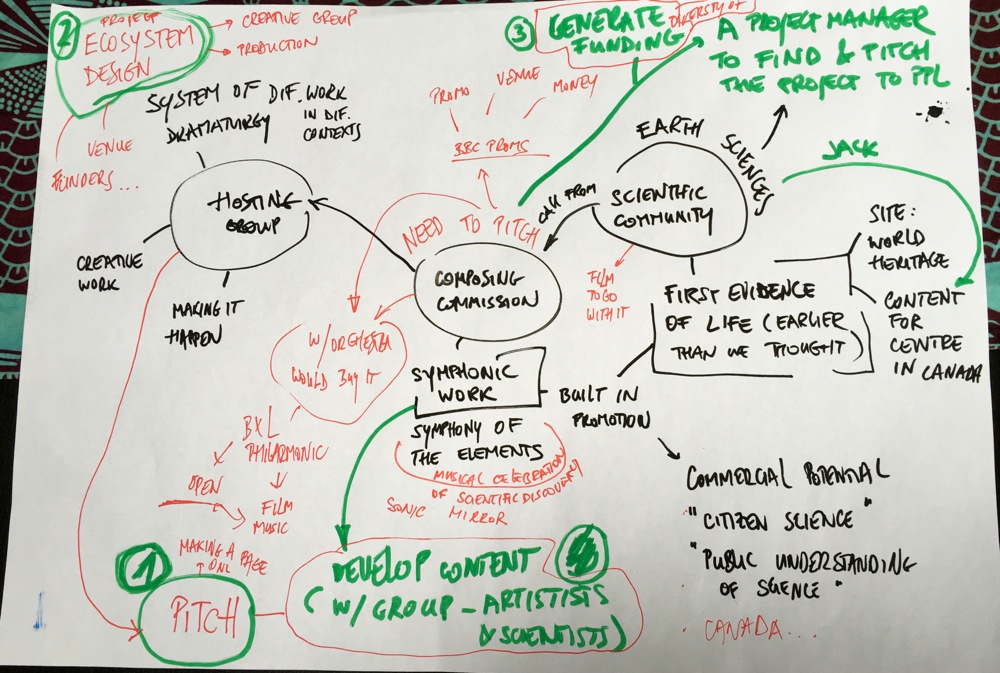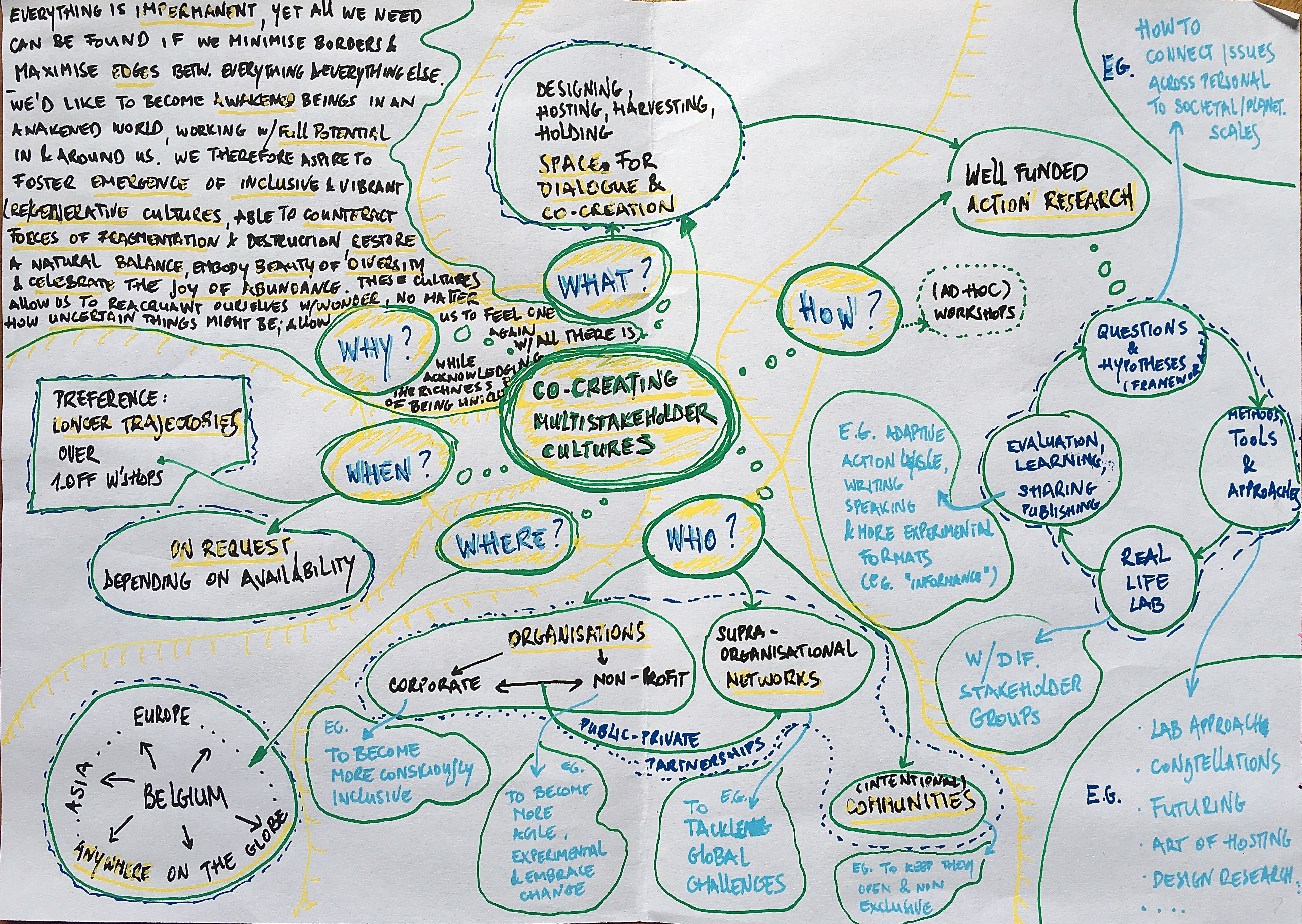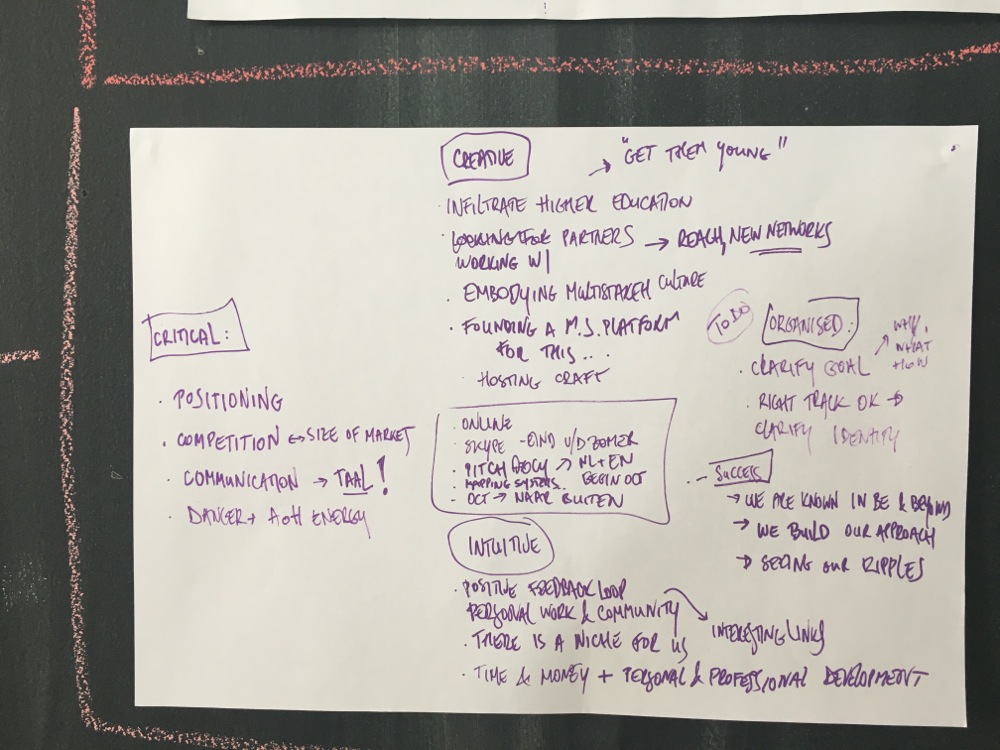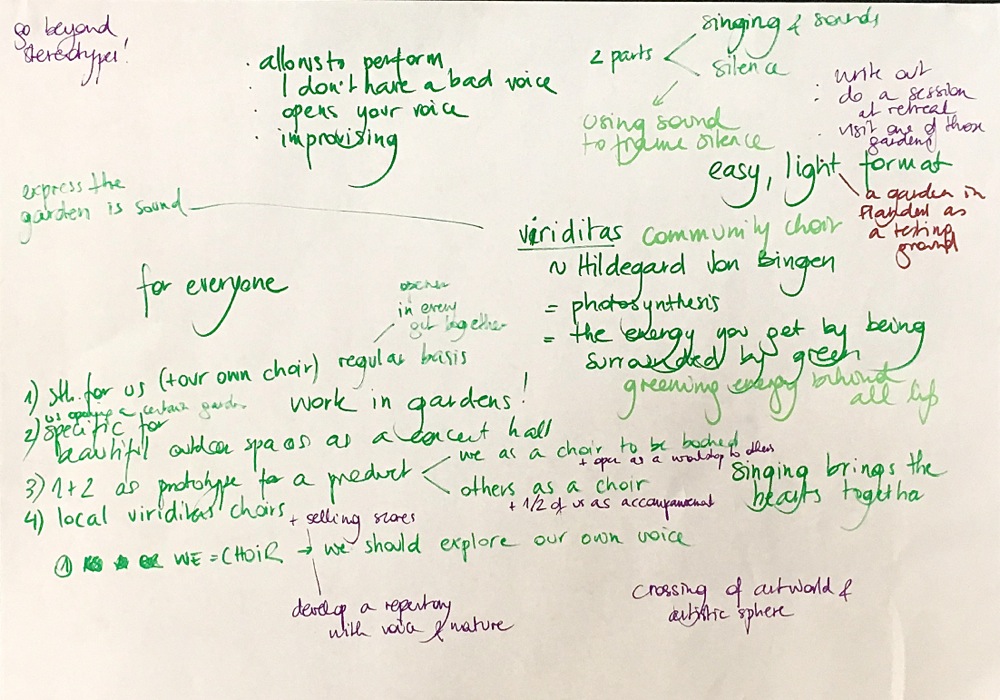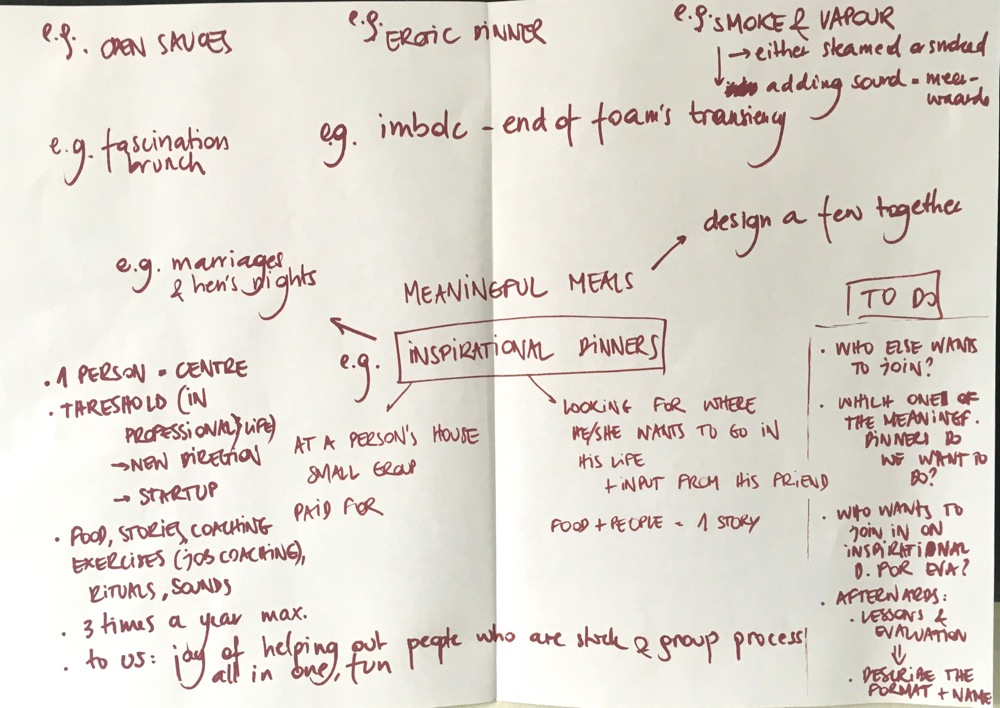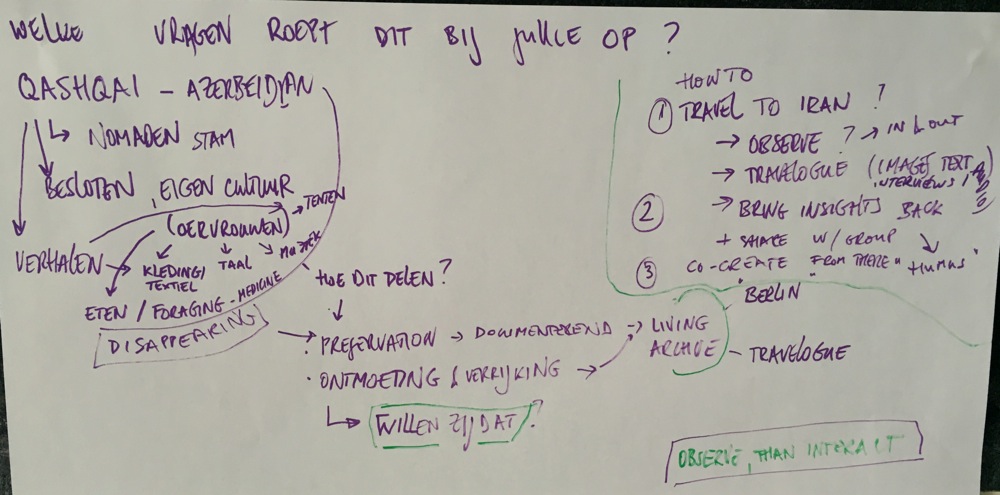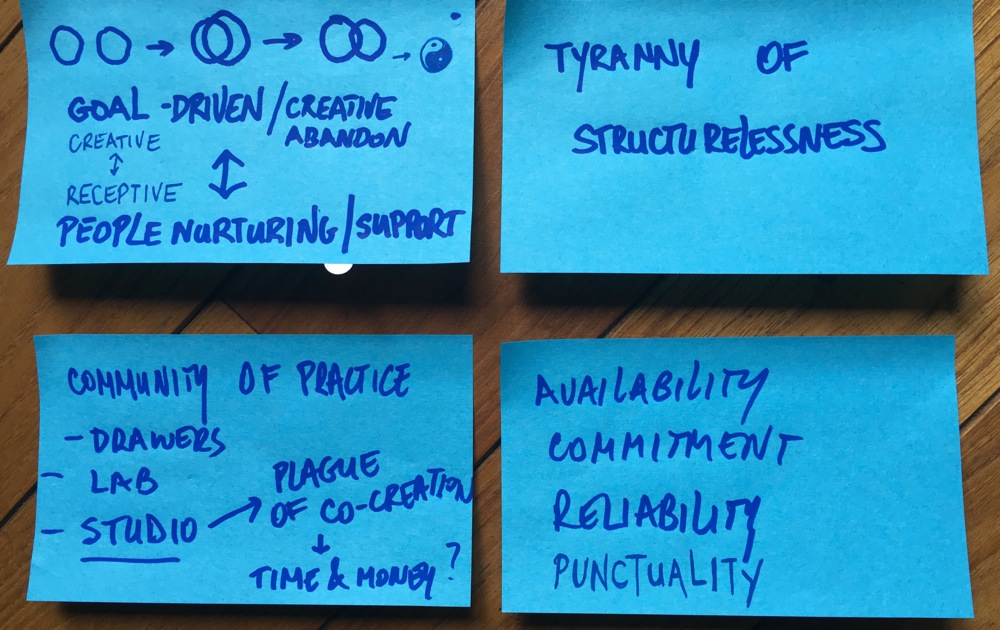This is an old revision of the document!
Hosting community Open Space
7th July 2016 @ FoAM BXL
Core question: “How can we develop our practice?”
→ “Practice” could mean a specific activity, a working group, a thematic strand, a hosting experiment - anything that the community could co-create or support. Remind yourself of the activity mapping, as discussed in the previous gathering.
Flow: Open Space, on our blackboard, as a loose schedule
Framing: In this gathering, rather than talking about how the community could work - we are trying it out - in practice. Anyone who would like to discuss, test, or co-create an activity can host a session, lasting from 30-60 minutes. In Open Space anyone can become a host. If you'd like to host a session, you can design it as you like. It could be a conversation, exercise, test, mentoring, design, or anything else - the more different formats, the more refreshing the gathering will be. When proposing the session it can be useful to let the other participants know:
- what is the session about?
- what do you aim to get out of the session?
- what will be the format of the session)?
Resulting schedule for the day (with a check-in and warm up beforehand, and a check-out and meditation afterwards):

Re-treat
Charnia
Multiple stakes
A session to discuss how to frame our facilitation of participatory processes for multistakeholder groups and (systemic) transitions, where the hosting community functions as an action research lab for individual and collective experiments. The session consists of a presentation of a proposal as sketched out by Luea and Maja, a feedback round using the Six Thinking Hats cards and planning next steps.
-Hosted by Maja

Viriditas choir
Inspirational Dinners
Nomads Land
Conundrums
This session is meant to bring a few conundrums out in the open, without attempting to resolve them. Just let them linger in the back of our heads in the months to come… We began by bringing up a few pain points “… to bind and pin down negative energies or obscurations from the mindstream of an entity, person or thoughtform, including the thoughtform generated by a group, project and so on, to administer purification.” (using Vajrakīla, the ritual dagger. During and after the session these points were transformed into open questions. At the end of the day we improvised a guided reflection for voice and hurdy-gurdy (see below).
-Hosted by Maja
How do we transform problems into creative challenges?
For example:
- How can we, in this community, find a good flow between creative and receptive energies, between collective, goal-driven activities and supporting/nurturing individual members (think of the flow in the yin-yang symbol)?
- How can we co-create a light and clear community structure to avoid the “tyranny of structurelessness” (see quote below), allowing the group to become agile and adaptive?
- How do we balance the drive to hang out together and co-create new activities with the “time & money” pressure the individual members are struggling with?
- How can we be available, committed, reliable and punctual, so that we can enjoy “being and doing” together? So that the logistics and co-ordination tasks can be evenly and effectively distributed and exchanged, while also having time to socialise, celebrate and relax, i.e. enjoy each others' company?
Unstructured groups may be very effective in getting women to talk about their lives; they aren't very good for getting things done. It is when people get tired of “just talking” and want to do something more that the groups flounder, unless they change the nature of their operation. Occasionally, the developed informal structure of the group coincides with an available need that the group can fill in such a way as to give the appearance that an Unstructured group “works.” That is, the group has fortuitously developed precisely the kind of structure best suited for engaging in a particular project. While working in this kind of group is a very heady experience, it is also rare and very hard to replicate. (…) Once the movement no longer clings tenaciously to the ideology of “structurelessness,” it is free to develop those forms of organization best suited to its healthy functioning. (…) Mostly, we will have to experiment with different kinds of structuring and develop a variety of techniques to use for different situations. (…) But before we can proceed to experiment intelligently, we must accept the idea that there is nothing inherently bad about structure itself – only its excess use. Tyranny of structurelessness by Jo Freeman
Guided meditation
Think of a difficult situation that has you in its grip. Inhabit it, surround yourself in it as if you were in a movie. Look at yourself. What does your distress feel like? In your thoughts, emotions, in your body… What’s underneath this feeling? Is there a deeper wound, a vulnerability, a suffering, an unfulfilled yearning? Stay in this yearning for a while. See it, experience it as it is right at this moment. Offer it what it needs… As Thich Nhat Hahn says: “Darling, I see your suffering…” Begin turning outwards… Look at the difficult situation again, and you in it. What does this situation want to teach you? What can you take from it on your life's path? Let's look at this path for a while… Your life… What if you had only a year to live? A month? A day? An hour? Just a few moments? What would really matter? Slowly come back to the here-and-now. Look around you. Remind yourself how precious it is to be alive, no matter if it's for a few moments or many decades… How does it feel to be grateful for being alive? Let everything else fade into the background, as sound gradually fades into silence…

